In Oak Brook, Ill., about 15 miles west of downtown Chicago, McDonald’s former corporate headquarters has been transformed into a modern office building for its new tenant, Ace Hardware. Now for the first time, Ace Hardware can bring 1,700 employees from three facilities under one roof. (See more office building news from BD+C.)
Originally designed by architect Dirk Lohan, grandson of Mies van der Rohe, McDonald’s old corporate HQ had quirky design elements such as golden arches on door handles and a circular, tiered boardroom that resembled a Quarter Pounder, with “sesame seeds” on the ceiling. In addition to the 300,000-sf office building and 130,000-sf training facility (which housed Hamburger University), the campus comprises a 218-room Hyatt and a smaller leased office building.
Modernizing McDonald’s headquarters while preserving its mid-century modern architecture
Architecture firm Studio Steinbomer has modernized the administrative building while preserving its midcentury architecture and design. Throughout the building, the design team emphasized the midcentury aesthetic—introducing terrazzo flooring, wood slats, metal panels and brick, as well as replacing windows using the original’s same glass profile.
The team reconfigured and renovated the building to serve Ace’s needs, made updates to meet code requirements, and fully renovated all the restrooms, elevator lobbies, and main lobby. A new amenity center includes a café, private dining rooms, commercial kitchen, fitness center, multipurpose room, interview rooms, and conference center.
Two changes represented the most significant interventions: first, converting McDonald’s large test kitchens on the top floor into offices that can enjoy views of the campus; and second, turning the parking garage into a food service area with a café that opens to an outdoor plaza. Both of these elements aim to provide employees with stronger connections to the site. Similarly, the conference center has been equipped with modern technology and flexible folding walls inside a sunlit, glass-encased space, creating a visual and physical connection with the surroundings.
Previously, the administrative facility’s ground floor had been mostly devoted to back-of-house functions. By converting the parking garage and expanding ground-floor uses with vestibules and meeting areas, the lobby is now more interactive and functional. As a result, people feel welcome to linger in the space under its massive skylight.
On the Building Team:
Owner/developer: JPD Oak Brook Holdings, LLC
Design architect and architect of record: Studio Steinbomer
Landscape Architect: Lamar Johnson Collaborative
MEP engineer: ESD (now Stantec)
Structural engineer: Wiss, Janney, Elstner Associates, Inc.
General contractor: Executive Construction, Inc.
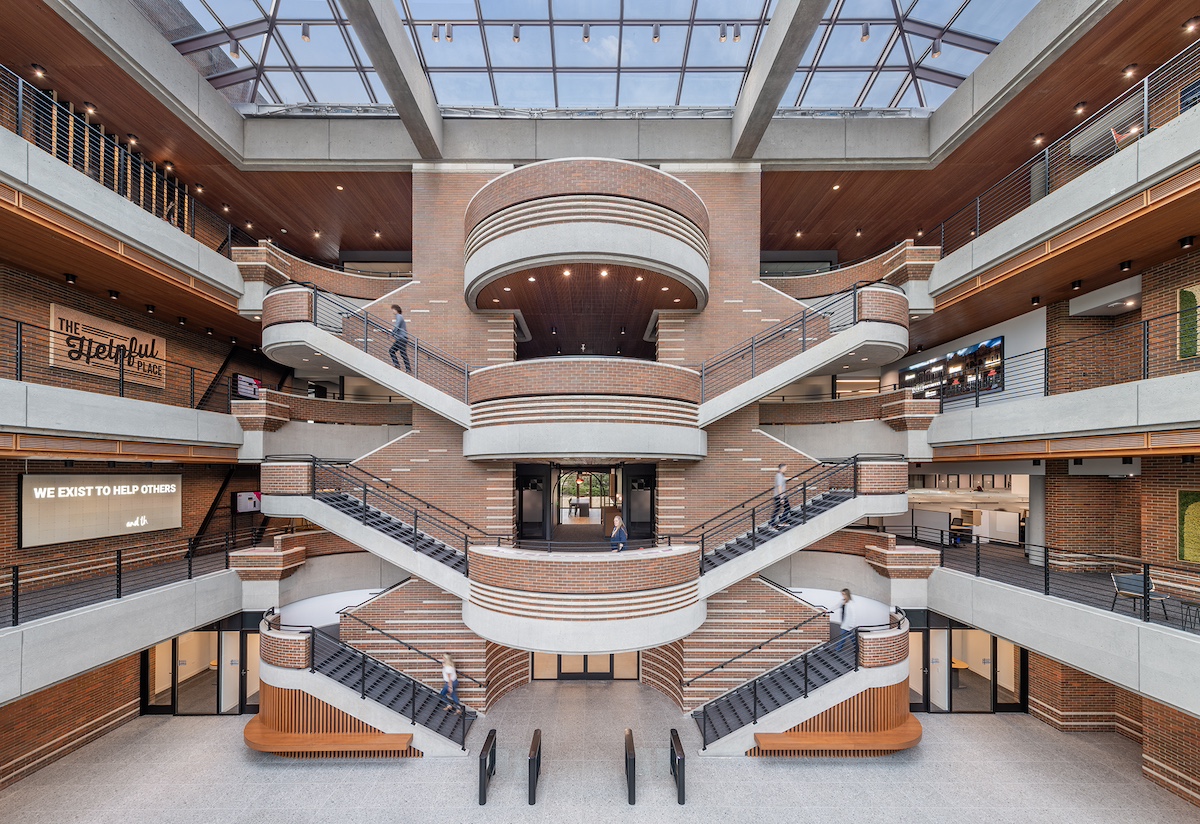
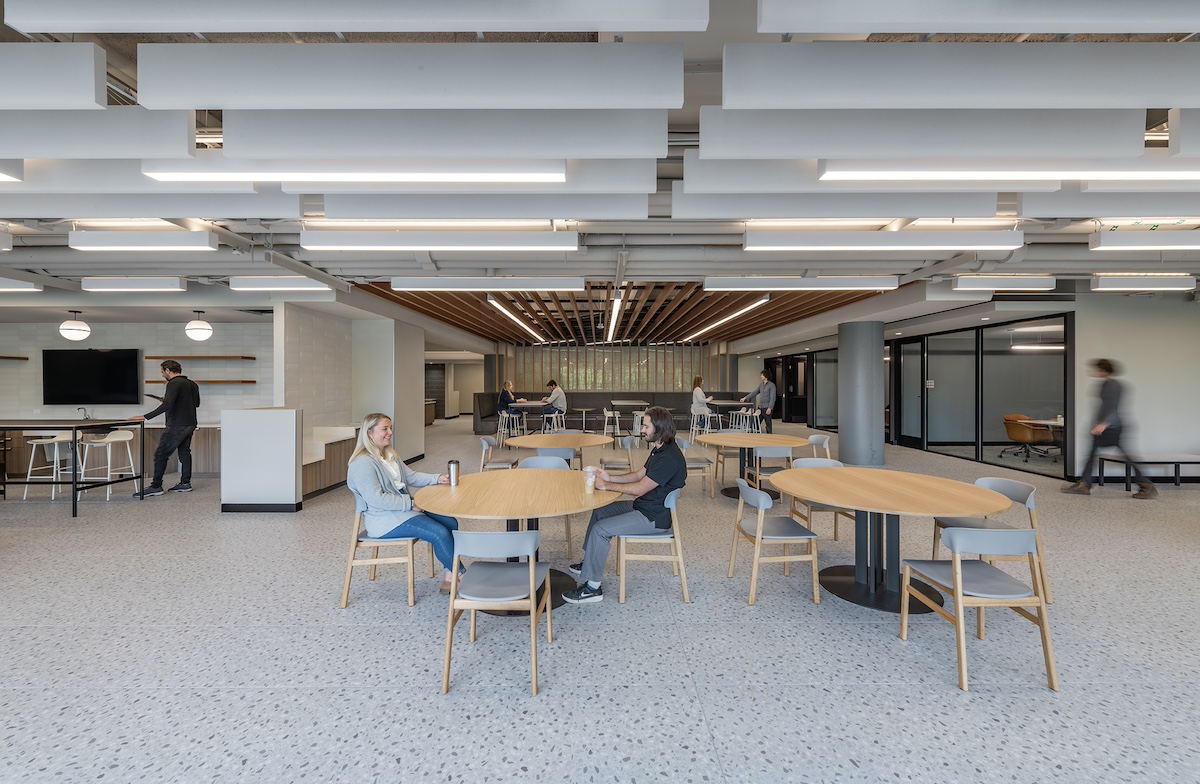
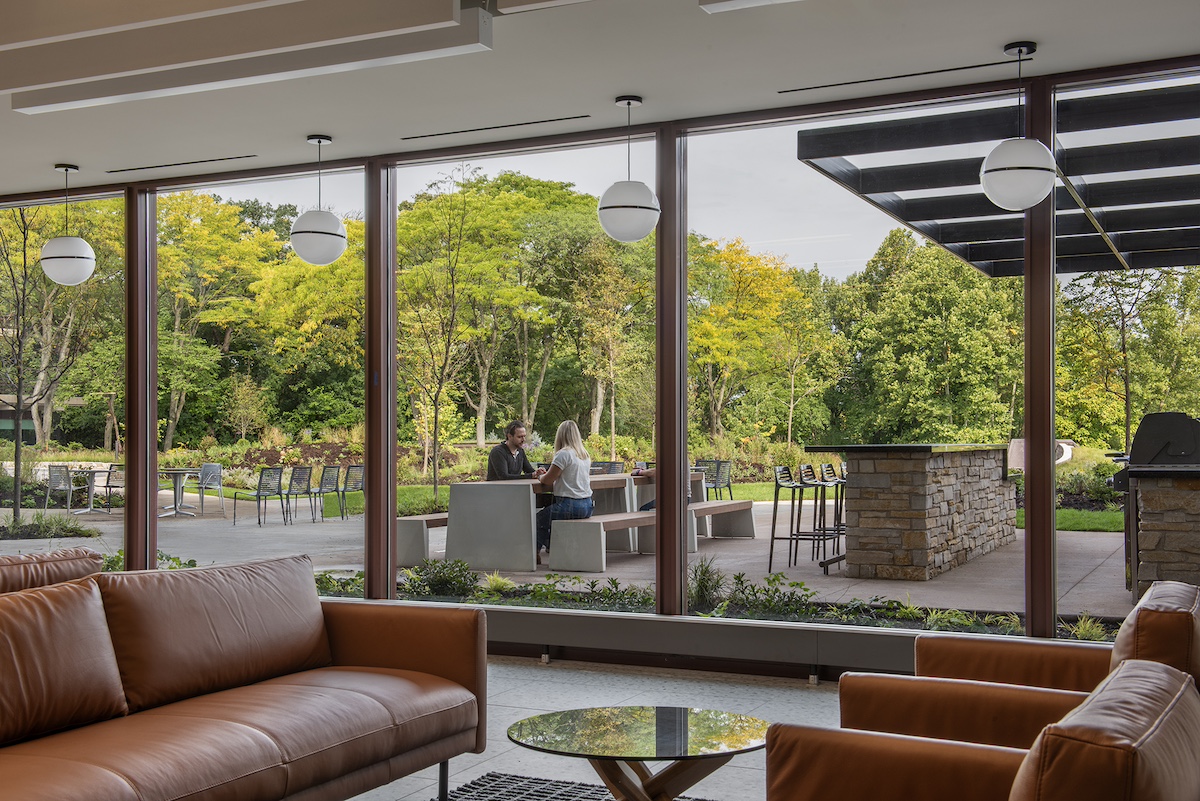
Here is the project summary from architect Studio Steinbomer:
The project to renovate this former McDonalds corporate campus, which was much beloved for its mid-century design and unique features, brought very particular challenges. The 80-acre site, located 15 miles west of downtown Chicago, includes lakes and streams, as well as abundant trees, and even boasts the oldest tree in Illinois. In addition to the 300,000-square-foot office building and 130,000-square-foot training facility - which housed Hamburger University - the campus also comprises a 218-key Hyatt and a smaller leased office building. McDonalds’ departure in 2021 left the specialized buildings and bucolic campus in search of a new use and brought significant concern among both architects and the public that the buildings would be lost to a lack of imagination. Fortunately, the new owner saw opportunity in the existing design and brought in Studio Steinbomer to complete base building improvements of the administrative building for new tenant Ace Hardware
The existing headquarters building carries significant architectural bona fides; it was designed by architect Dirk Lohan, grandson of Mies van der Rohe, and was endowed with exquisite, if somewhat dated and worn, detailing. Its function as McDonald's corporate headquarters also brought with it quirky design elements, including golden arches on door handles and a circular boardroom with three tiers of seating resembling the layers of a quarter pounder, complete with “sesame seeds” on the ceiling. The Steinbomer team took stock of the existing opportunities and gave careful attention to curating what should stay and what could go.
Studio Steinbomer's scope of work included the full renovation of all restrooms, elevator lobbies, and the main lobby, as well as creating a new amenity center that includes a café, private dining rooms, commercial kitchen, fitness center, multi-purpose room, interview rooms, and a conference center. The architects’ efforts included updates to meet code requirements and reconfiguring the program’s spaces and functions, while celebrating the mid-century style and preserving the original architectural design. For Ace Hardware, the project consolidated 1,700 employees from three facilities under one roof for the first time and represented an opportunity to bolster its culture, provide a beautiful workplace, and leave room for expansion. The dramatic adaptive re-use amounted to a taking leap of faith that the interiors could not only be brought into a more modern aesthetic, but also accommodate current technology needs and employee expectations.
The most significant interventions involved converting the large test kitchens on the top floor into offices that take advantage of campus views, and adapting the parking garage into a food service area with a café that opens to an outdoor plaza, both design gestures that provide employees with stronger connections to the site. Likewise, the conference center was fitted with modern technology packages and flexible folding walls inside a sunlit, glass-encased space that interacts visually and physically with its surroundings.
The large administrative facility’s ground floor had been predominantly devoted to back-of-house functions. The lobby, although establishing a grand entrance, previously had little else to offer the building's ground floor experience or uses; there was nowhere to go but up. By converting the parking garage and expanding ground-floor uses with vestibules and meeting areas around the perimeter, the dramatic lobby is now more interactive and functional, inviting people to linger in the charming space under the massive skylight. Throughout the building, but here especially, the Steinbomer team leaned into the mid-century aesthetic, introducing terrazzo flooring, wood slats, metal panels and brick, as well as replacing windows using the same glass profile of the original and continuing the detailing and simplicity of the original design. Dated glass blocks were replaced by glass or slatted wall panels throughout the building to retain the sense of transparency in walls and partitions.
Converting the ground-floor parking garage into the desired café amenity brought different challenges. Because the live load requirement for vehicles is lower than that for people, parts of the garage space required a reinforced structural slab to be placed on top of the existing slab and columns to also be reinforced, creating further spatial limitations. In addition, accommodating modern technology, electrical, and HVAC infrastructure added a layer of complexity in the building’s various low-slung interiors with long, open spans. In response, the architects varied ceiling heights where possible to open interior spaces and introduced acoustical ceiling baffles to mitigate any closed-in effect. To create a sense of void above the low ceiling in the café, for example, wooden slats were layered overhead to create the perception of an unseen void. The effect creates the feeling of sitting under a pergola shelter that opens onto the verdant campus via the floor-to-ceiling glass that opens to the adjacent patio.
The artful adaptive re-use of the campus, once thought to be un-adaptable due to its specific program and quirky features, manages to deftly retain the existing bones of the architecture, the character and quality of the design, and the spirit of the place to keep the building alive and functioning well into the future.


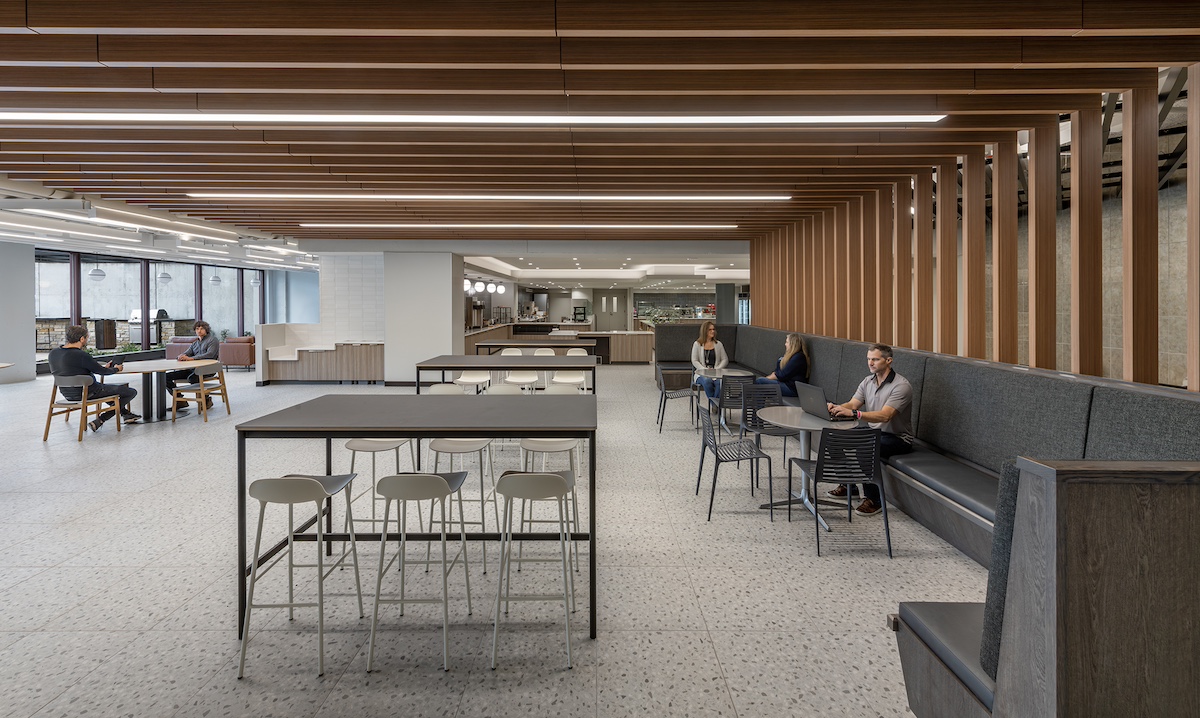
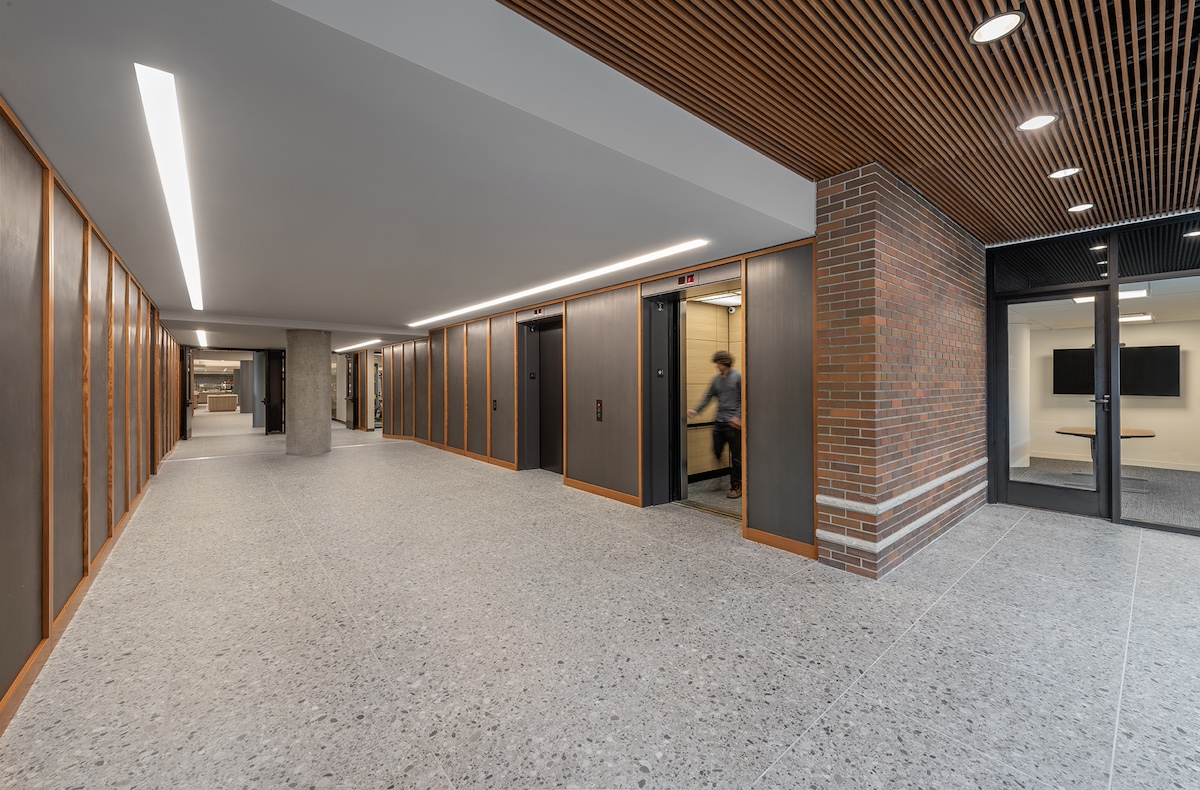
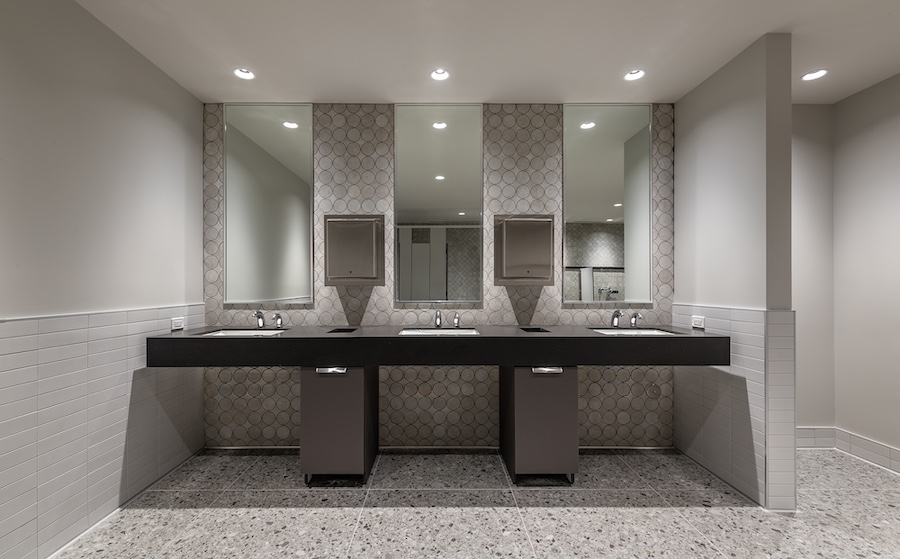

Related Stories
| Nov 8, 2013
Can Big Data help building owners slash op-ex budgets?
Real estate services giant Jones Lang LaSalle set out to answer these questions when it partnered with Pacific Controls to develop IntelliCommand, a 24/7 real-time remote monitoring and control service for its commercial real estate owner clients.
| Nov 6, 2013
Dallas’s goal of carbon neutrality by 2030 advances with second phase of green codes
Dallas stands out as one of the few large cities that is enforcing a green building code, with the city aiming to be carbon neutral by 2030.
| Nov 6, 2013
Energy-efficiency measures paying off for commercial building owners, says BOMA study
The commercial real estate industry’s ongoing focus on energy efficiency has resulted in a downward trend in total operating expenses (3.9 percent drop, on average), according to BOMA's Experience Exchange Report.
| Nov 6, 2013
PECI tests New Buildings Institute’s plug load energy use metrics at HQ
Earlier this year, PECI used the NBI metrics to assess plug load energy use at PECI headquarters in downtown Portland, Ore. The study, which informed an energy-saving campaign, resulted in an 18 percent kWh reduction of PECI’s plug load.
| Oct 31, 2013
CBRE's bold experiment: 200-person office with no assigned desks [slideshow]
In an effort to reduce rent costs, real estate brokerage firm CBRE created its first completely "untethered" office in Los Angeles, where assigned desks and offices are replaced with flexible workspaces.
| Oct 30, 2013
15 stellar historic preservation, adaptive reuse, and renovation projects
The winners of the 2013 Reconstruction Awards showcase the best work of distinguished Building Teams, encompassing historic preservation, adaptive reuse, and renovations and additions.
| Oct 30, 2013
Why are companies forcing people back to the office?
For a while now companies have been advised that flexibility is a key component to a successful workplace strategy, with remote working being a big consideration. But some argue that we’ve moved the needle too far toward a “work anywhere” culture.
| Oct 30, 2013
11 hot BIM/VDC topics for 2013
If you like to geek out on building information modeling and virtual design and construction, you should enjoy this overview of the top BIM/VDC topics.
| Oct 28, 2013
Urban growth doesn’t have to destroy nature—it can work with it
Our collective desire to live in cities has never been stronger. According to the World Health Organization, 60% of the world’s population will live in a city by 2030. As urban populations swell, what people demand from their cities is evolving.
| Oct 23, 2013
Gehry, Foster join Battersea Power Station redevelopment
Norman Foster and Frank Gehry have been selected to design a retail section within the £8 billion redevelopment of Battersea Power Station in London.

















